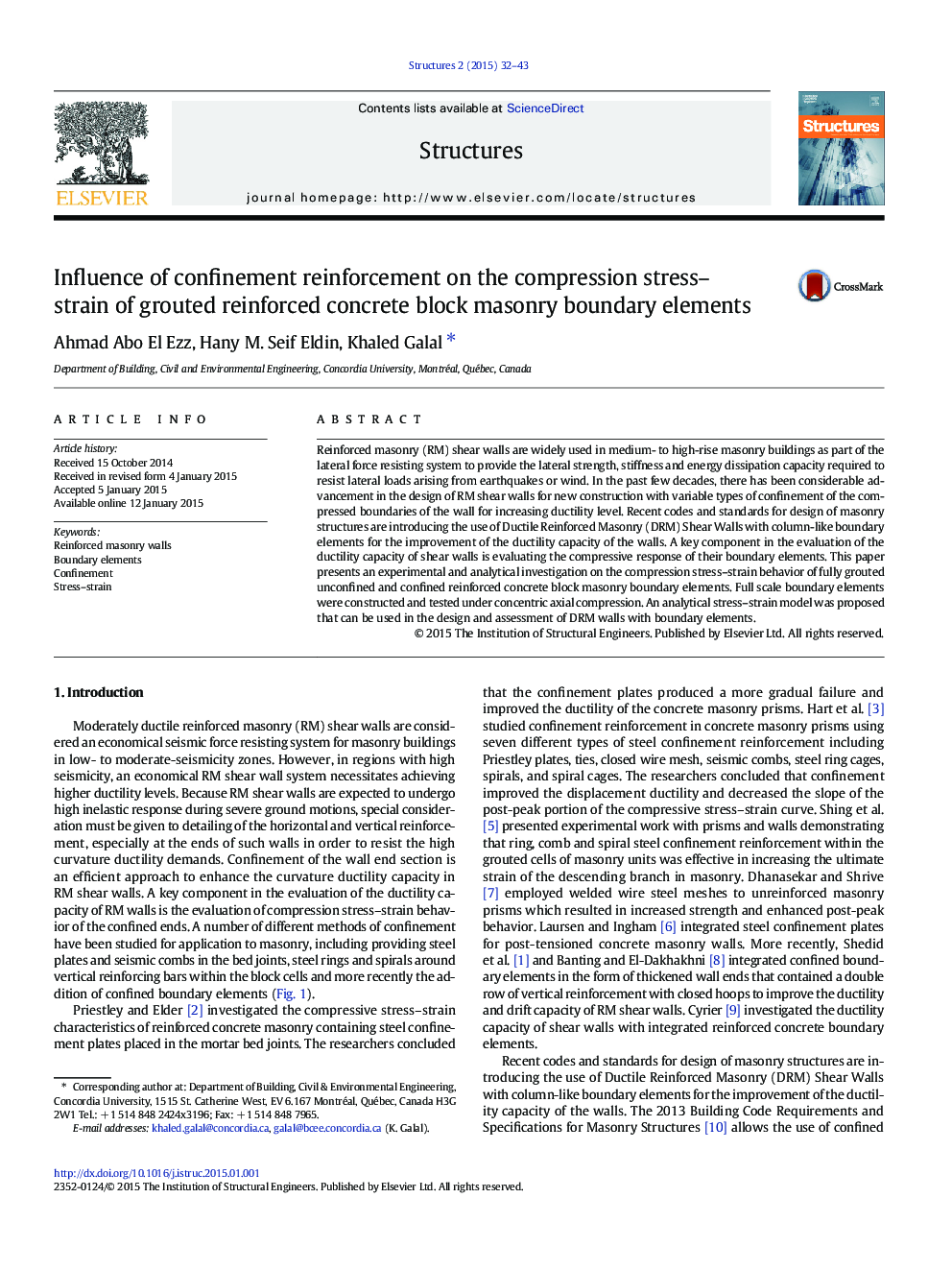| Article ID | Journal | Published Year | Pages | File Type |
|---|---|---|---|---|
| 308008 | Structures | 2015 | 12 Pages |
Reinforced masonry (RM) shear walls are widely used in medium- to high-rise masonry buildings as part of the lateral force resisting system to provide the lateral strength, stiffness and energy dissipation capacity required to resist lateral loads arising from earthquakes or wind. In the past few decades, there has been considerable advancement in the design of RM shear walls for new construction with variable types of confinement of the compressed boundaries of the wall for increasing ductility level. Recent codes and standards for design of masonry structures are introducing the use of Ductile Reinforced Masonry (DRM) Shear Walls with column-like boundary elements for the improvement of the ductility capacity of the walls. A key component in the evaluation of the ductility capacity of shear walls is evaluating the compressive response of their boundary elements. This paper presents an experimental and analytical investigation on the compression stress–strain behavior of fully grouted unconfined and confined reinforced concrete block masonry boundary elements. Full scale boundary elements were constructed and tested under concentric axial compression. An analytical stress–strain model was proposed that can be used in the design and assessment of DRM walls with boundary elements.
